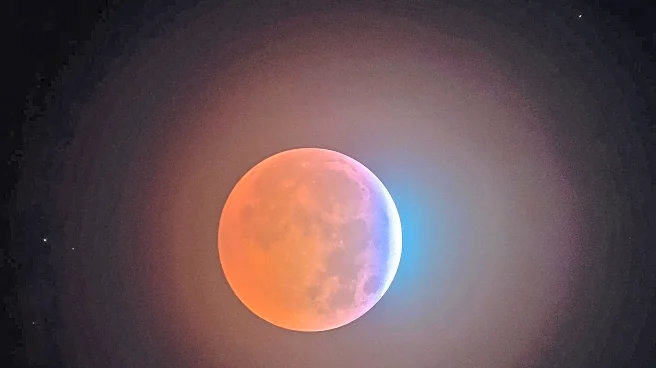What's Happening?
November's supermoon, known as the Beaver Moon, will be the brightest full moon of 2025, occurring on November 4-5. This supermoon is part of a series of four consecutive supermoons, with the moon reaching
peak illumination at 8:19 a.m. ET on November 5. The Beaver Moon is named for its historical significance in trapping beavers for pelts and coincides with the busy season for beavers preparing for winter. The moon will appear nearly full for a week, offering extended viewing opportunities.
Why It's Important?
The Beaver Moon's brightness and proximity to Earth make it a significant event for astronomers and the general public. It provides an opportunity to observe the moon's impact on tides and natural light, which can affect nocturnal wildlife and human activities. The event also highlights the moon's elliptical orbit and its influence on lunar visibility, fostering interest in celestial phenomena and encouraging public engagement with astronomy.
What's Next?
Following the Beaver Moon, November will also feature a micro new moon on November 20, when the moon is at its farthest point from Earth, known as apogee. This contrast between supermoon and micro moon events may lead to increased interest in lunar cycles and their effects. Future supermoons will continue to draw attention to the moon's role in Earth's natural systems.
Beyond the Headlines
The Beaver Moon event emphasizes the cultural and historical significance of lunar cycles, which have been integral to human activities such as agriculture and hunting. It also highlights the advancements in astronomical observation, allowing for greater public participation and appreciation of natural phenomena.












